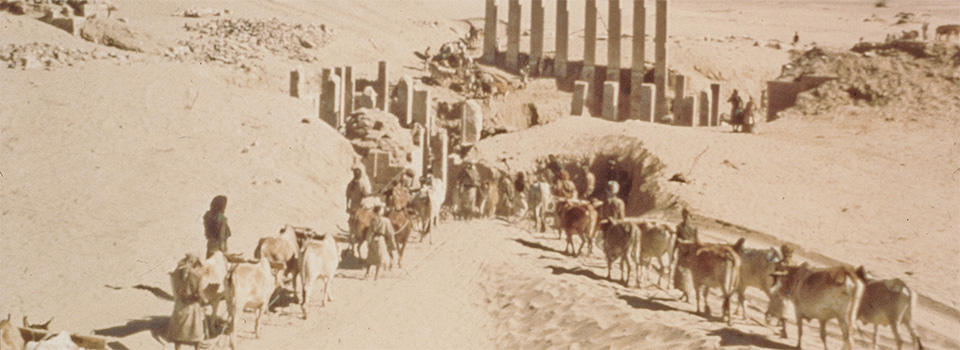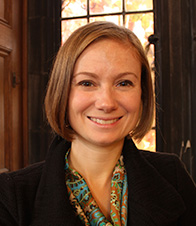In the Dig House: Behind the Scenes in Archaeology

Freer, Meyer Auditorium
Saturday, April 25, 10 am–1:30 pm
Speaker Bios
Dr. Zaydoon Zaid, vice president, American Foundation for the Study of Man (AFSM), “Uncovering the Past: The Content of AFSM’s Archive”
 Dr. Zaydoon Zaid has a master’s degree in archaeology and a PhD in
architecture from the Technical University of Aachen, Germany.
He researches the archaeology and architecture of the Near East and
has been involved in the archaeology of Jordan, Syria, Palestine, and
Dr. Zaydoon Zaid has a master’s degree in archaeology and a PhD in
architecture from the Technical University of Aachen, Germany.
He researches the archaeology and architecture of the Near East and
has been involved in the archaeology of Jordan, Syria, Palestine, and
Yemen since 1986. His work has included excavating the prehistoric
sites of Ain Ghazal and Basta. He also researches the city planning and
architecture of the Decapolis cities, in greater Syria. Dr. Zaid joined the
AFSM as an architect/archaeologist—also serving as the foundation’s
vice president—and worked at the Mahram Bilqis Archaeological Project
in Marib, Yemen.
Dr. Emily Hammer, director, Center for Ancient Middle Eastern Landscapes, Oriental Institute, University of Chicago, “Digital Technologies and Archaeology in the Modern Middle East”
 Archaeologist Emily Hammer studies cultural landscapes of the ancient
Middle East. Her research and teaching explore large regions over long
periods of history, investigating changes in settlement patterns, demography,
and human-environment interactions in Turkey, the United Arab Emirates,
and Azerbaijan. She employs a range of archaeological techniques, including
excavation, field surveying, examination of satellite and aerial remote sensing
imagery, and Geographical Information Systems analyses. Hammer holds a
PhD in anthropology from Harvard University and a BA in both mathematics
and archaeology from Bryn Mawr College. She is director of the Center for
Ancient Middle Eastern landscapes at the Oriental Institute of the University
of Chicago, where she leads projects reanalyzing ancient settlement patterns in Iraq and Afghanistan using declassified “spy satellite” imagery.
Archaeologist Emily Hammer studies cultural landscapes of the ancient
Middle East. Her research and teaching explore large regions over long
periods of history, investigating changes in settlement patterns, demography,
and human-environment interactions in Turkey, the United Arab Emirates,
and Azerbaijan. She employs a range of archaeological techniques, including
excavation, field surveying, examination of satellite and aerial remote sensing
imagery, and Geographical Information Systems analyses. Hammer holds a
PhD in anthropology from Harvard University and a BA in both mathematics
and archaeology from Bryn Mawr College. She is director of the Center for
Ancient Middle Eastern landscapes at the Oriental Institute of the University
of Chicago, where she leads projects reanalyzing ancient settlement patterns in Iraq and Afghanistan using declassified “spy satellite” imagery.
Dr. Christopher Tuttle, executive director, Council of American Overseas Research Centers (CAORC), “Protecting and Preserving the World Heritage Site of Petra, Jordan: Engaging Local Communities in Sustainable Preservation Efforts”
 Christopher A. Tuttle earned his doctorate from Brown University in
Hellenistic/Roman period archaeology of the Near East. The focus of his
research has been the ancient kingdom of the Nabataeans and their capital
city of Petra, where he has worked on numerous projects for more than a
decade. He is the founding director of the Petra Temple of the Winged
Lions Cultural Resource Management Initiative (TWLCRM). The initiative
Christopher A. Tuttle earned his doctorate from Brown University in
Hellenistic/Roman period archaeology of the Near East. The focus of his
research has been the ancient kingdom of the Nabataeans and their capital
city of Petra, where he has worked on numerous projects for more than a
decade. He is the founding director of the Petra Temple of the Winged
Lions Cultural Resource Management Initiative (TWLCRM). The initiative
received the 2015 Archaeological Institute of America’s Best Practices in
Site Preservation Award and also inspired a new USAID-funded national
initiative for sustainable preservation of cultural heritage resources
throughout Jordan. He currently serves as the executive director of the
nonprofit Council of American Overseas Research Centers (CAORC) here in Washington, DC.
Marya Fisher, PhD candidate and Erwin Panofsky Fellow at the Institute of Fine Arts, New York University, “My Empire of Dirt: A Student’s View from the Dig House”
 Marya Fisher is a PhD candidate and Erwin Panofsky Fellow at the Institute
of Fine Arts, New York University. Her dissertation examines the
intersection of architecture and ritual in the non-peripteral temples of
South Italy and Sicily. Fisher has worked on archaeological projects at
Kastro Kallithea, Samothrace, and Corinth in Greece; Polis Chrysochous;
Cyprus; and Selinunte, Sicily.
Marya Fisher is a PhD candidate and Erwin Panofsky Fellow at the Institute
of Fine Arts, New York University. Her dissertation examines the
intersection of architecture and ritual in the non-peripteral temples of
South Italy and Sicily. Fisher has worked on archaeological projects at
Kastro Kallithea, Samothrace, and Corinth in Greece; Polis Chrysochous;
Cyprus; and Selinunte, Sicily.
